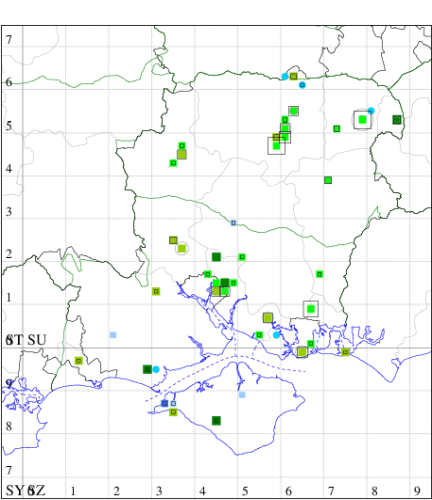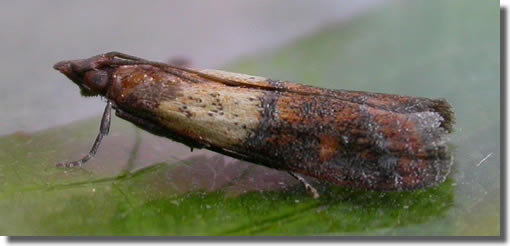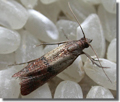Indian Meal Moth
Plodia interpunctella
Checklist Number62.062 [B&F: 1479]
Verification
Record will be accepted (subject to date and location checks)
Classification
| Family: | Pyralidae |
| Subfamily: | Phycitinae |
| Genus: | Plodia |
| Species: | interpunctella |
| Authority: | (Hübner, [1813]) |
Local in barns, warehouses and granaries, also sometimes in and around houses, throughout the British Isles, rarely recorded in the wider countryside. Thoroughly naturalised, through accidental introduction in dried goods, and now a frequent, often abundant, pest of warehouses, first recorded in Britain in 1847. Distributed erratically across Hampshire and on the Isle of Wight, where often found in bird seed and similar products, from pet shops. Wingspan 14-20 mm. Larva feeds on dried goods, cereals, grain, dried fruit, nuts and dead insects, causing sufficient damage to be a serious pest in some areas.


The abundance in each month is indicated as follows:
 No records
No records Very occasional
Very occasional Irregular
Irregular Uncommon
Uncommon Off-peak, but not unusual
Off-peak, but not unusual Off-peak, but not unusual
Off-peak, but not unusual Main flight time
Main flight time| J | F | M | A | M | J | J | A | S | O | N | D | |
|---|---|---|---|---|---|---|---|---|---|---|---|---|
| Adult |  |  |  |  |  |  |  |  |  |  |  |  |
| Larval |  |  |  |  |  |  |  |  |  |  |  |  |


